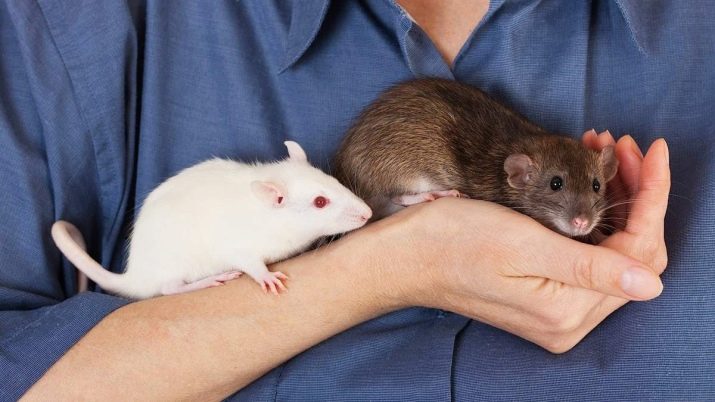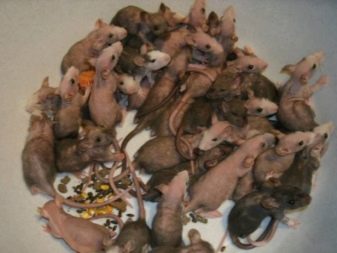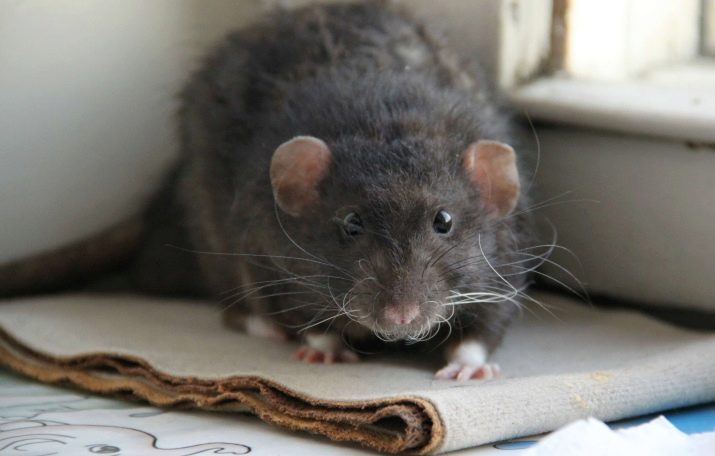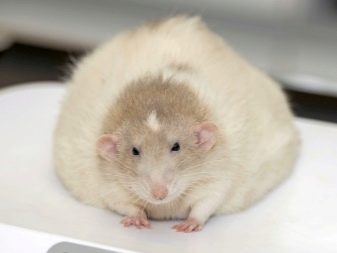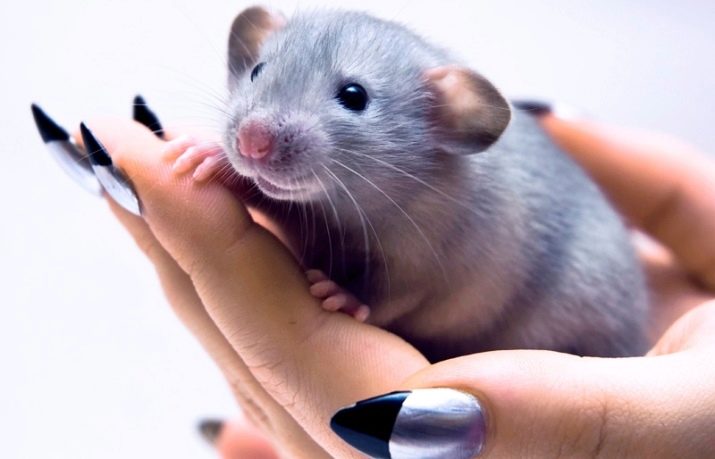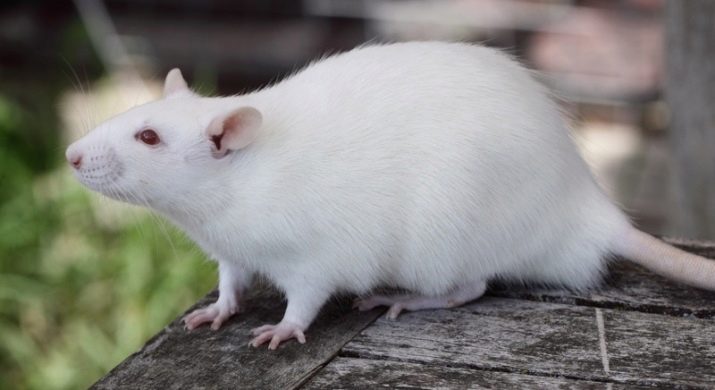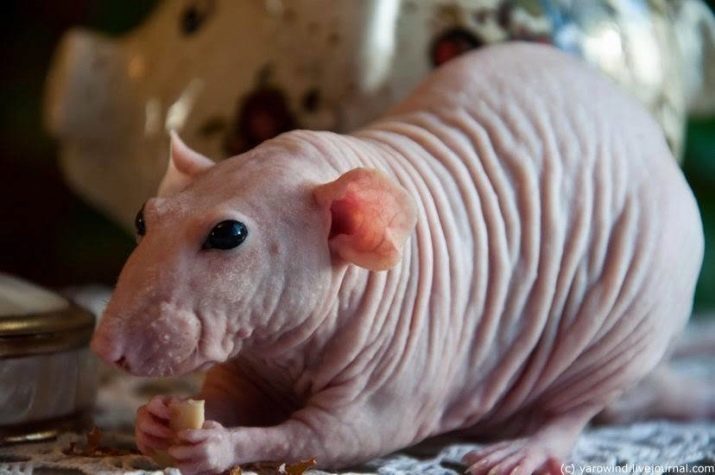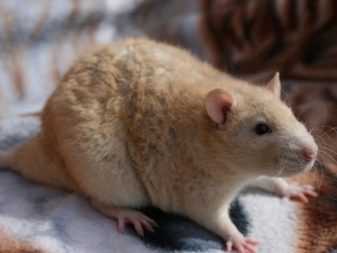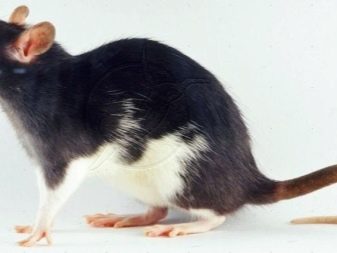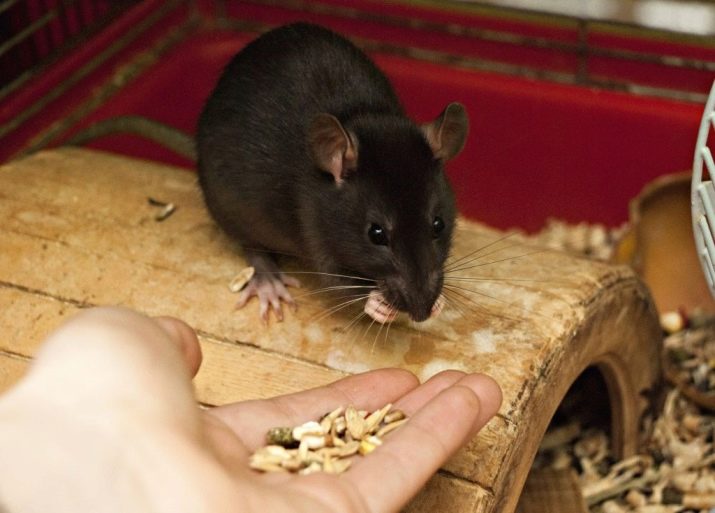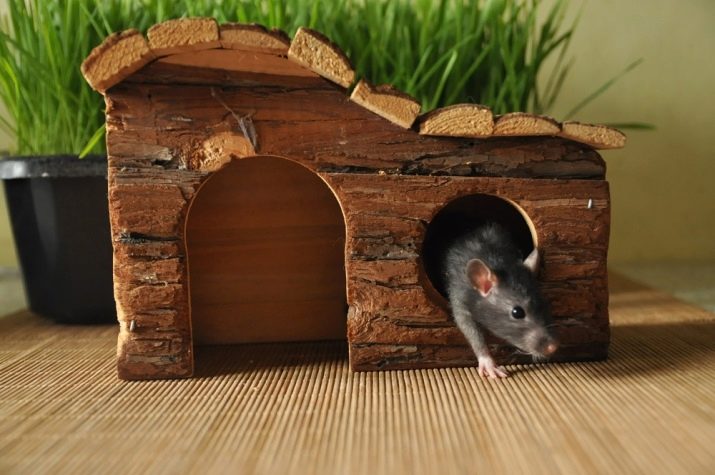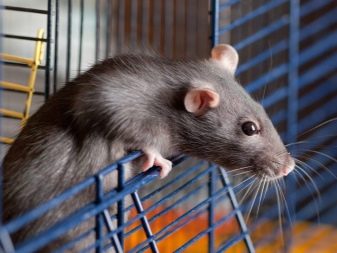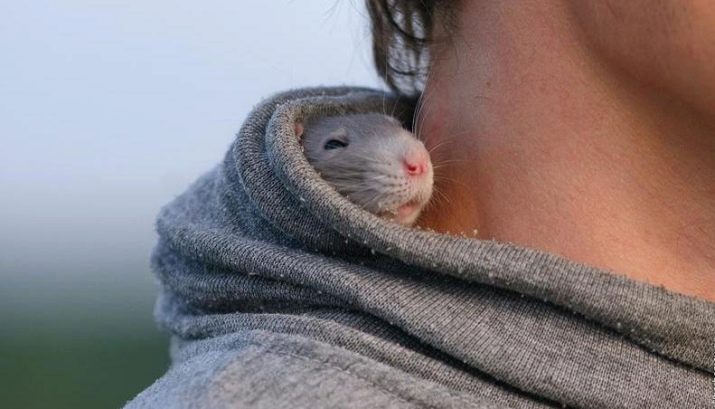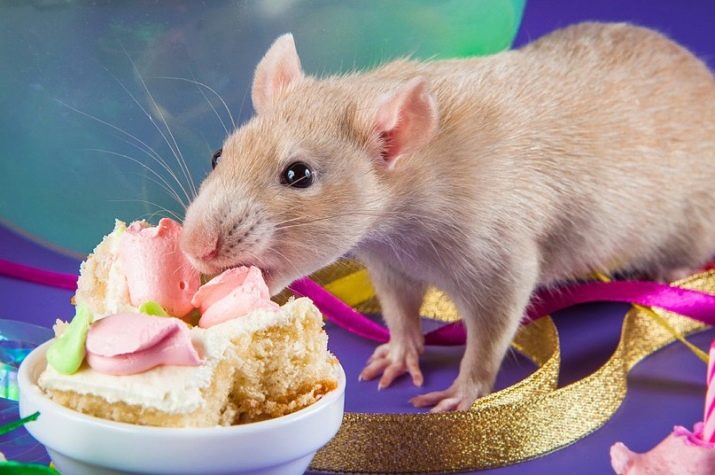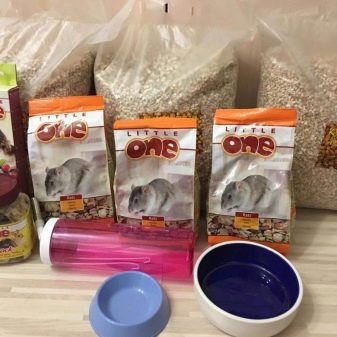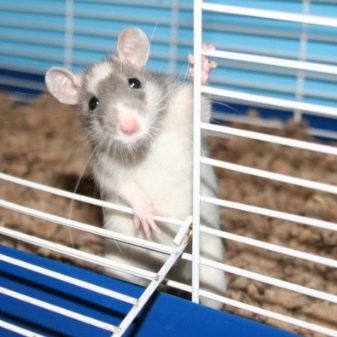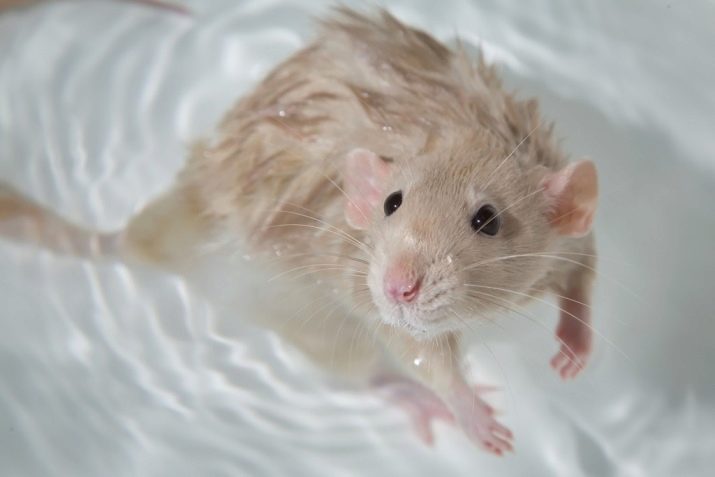Decorative rodents are very popular as pets. They are quite easy to care for. Even children can take care of domestic rats. In addition, rodents have a fairly developed intelligence. Therefore, it is very interesting to watch them. But in comparison with many other pets, hand-held rodents, unfortunately, are not so long-lived. The article will discuss how many rats live and how to extend the life of these animals.
How many years live in nature?
The free life of rodents in the natural environment is associated with constant physical activity. In rats and mice living in the wild, many enemies among predators. Snakes, hedgehogs and many birds also hunt them. Therefore, rodents need to be alert almost constantly. They are forced to move very quickly, to hide from all sorts of dangers.
Rats and mice have a very fast metabolism, which allows them to maintain body temperature during cold weather. But because of this feature, they need very frequent snacks. Most of the time wild animals are searching for and obtaining food for themselves and their offspring. And if on the territory where the rat pride lives, with food being tight, the individuals begin to quickly become exhausted and die. In some cases, rodents from hunger can attack on their own kind, that is, on rats, mice and their young.
Rats breed very often. One brood can contain more than ten rats. But not always the family lives to adulthood. The rat pups are very vulnerable and defenseless in the wild. Mother-rat because of the search for food is often forced to leave the nest. This makes it impossible for her to protect her brood permanently. Young rats do not tolerate heat and long-term cooling. Power outages also quickly weaken them and lead to the death of immature individuals.
On average, wild rats can live for about a year. Individuals living to the age of one and a half can be considered long-lived record holders.
Such a short lifespan is due to the rapid deterioration of the body due to constant loads, frequent births and adverse natural factors.
Shelf life at home
Ornamental rats live somewhat longer than their wild relatives. The lifespan of a manual rodent varies on average from 2 to 2.5-3 years. Moreover, most males live somewhat longer than females, even if they receive the same care.
In rare cases, rats kept in a house live up to 4 years due to good conditions. These are only isolated cases, which are considered rather the exception to the rule.
In the Guinness Book of Records was recorded case of a record life expectancy of a domestic rodent. He was seven years old, which is extremely atypical for this species of animals.
At the age of two years, at home, the rodent, in fact, already comes old age. This is reflected in his life and health. In three years, the animal's body already wear out in order, this period can be considered decrepitude.
What influences the duration of existence?
Genetic factor
Many species of rats were bred specifically for use in laboratories to test any medical drugs or to study diseases. Such a derivation suggests that when individuals are crossed, one or another gene, which is necessary for specific scientific purposes, will prevail in the offspring.
Therefore, many rats initially carry a predisposition to any disease or pathology. This may be a tendency to oncology, obesity, diabetes, etc.
Unfortunately, even rodents that are sold in specialized stores are not always completely healthy at the genetic level.
Family heaves also give poor heredity. The offspring in this case is born very weak, many individuals die in the first few days. Cubs born of closely related crossbreeding tend to degenerate and live much less than other individuals.
To acquire a healthy pet, it is advisable to collect information in advance about specific breeders or points of sale of animals.
Features of a particular breed
For breeding, external data is taken as a basis: the color and length of the coat, the size of the individuals, the presence of the tail, the shape of the ears, the color of the eyes, etc. But such a selection also postpones the imprint on the functioning of the animal's body.
Relative long-livers among the breeds of tame rodents are blue rats and dumbo. With proper care, animals easily live up to 2.5-3 years. Frequent among them are long-livers. Husky rodents imitate their color popular breed of dogs. Most often they are white with beige or gray spots. They can also be attributed to long-lived. Most individuals live to be 3-3.5 years old.
The smallest life expectancy in albino white rats. ABOUTnor have weak immunity. And genetics rewarded them with a tendency to cancer. Animals rarely live to even one and a half years.
Exotic sphinx rats have no hair. Therefore require special conditions of detention. The slightest hypothermia or draft can undermine a pet's health and lead to death. The average life of an albino ranges from one and a half to two years.
Standard and Rex breeds are mid-life. The average term of their life is about two years.
Nutrition
Due to a very fast metabolism, rodents are quickly depleted in the absence of food. An absolutely healthy individual can die in just two days of famine. Domestic rats are not affected by negative natural factors, such as cold. But their digestive system and metabolic processes are designed for a regular intake of food throughout the day.
Therefore, the frequency of feeding and the composition of feed play a very large role. Special attention should be paid to them and the rodent nutrition should be adjusted depending on its age, condition and special needs.
Dental health
Sharp, strong teeth are almost the main and important tool for the rat. With their help, she crushes and gnaws food. The diet of rodents for 80-90% consists of very solid foods and feed. Having lost the teeth, the animal will also lose the opportunity to fully eat the food that it needs.
The owner should remember that rodent teeth require constant grinding. Also during contact with solid food or objects there is their natural cleaning.
Home Improvement and General Maintenance Conditions
Rats need periodic exercise and the ability to be active. In a too small house or cage, the rodent will not be able to move as much as he needs. The result will be a gradual atrophy of the muscular system and obesity.
Cage or house with domestic rats should be in a room with a normal temperature.
How to properly care and maintain?
You can’t argue with the genetics and characteristics of each particular breed. But owners of domestic rodents are quite capable of at least slightly prolonging the life of their pets. Who knows, Perhaps, thanks to your care, the hand rodent will become another record holder in life expectancy among its relatives.
The appearance of the home rodent in the apartment begins with the arrangement of his home.
Regardless of whether it is a cage or a cardboard house, the main thing is that the animal has enough free space for movement. For females, tall cells with several levels of hammocks or shelves are best suited.
In the house you need to select an area where the rat can hide and feel safe. This may be a small tunnel, a box with a hole for entry or a corner curtained with a cloth. Rats by nature are pretty shy. Therefore, they need to periodically retire in a quiet closed place. Over time, you will be able to notice that the animal for sleep most often chooses precisely its secluded corner.
Take care that the rat is not scared and not disturbed. Think over the appropriate location of the cell in the apartment. You should not put a pet's house in a room where loud sounds are often heard. It is better not to put a cage in the room where they watch TV or listen to music.
Also, make sure that the rats do not bleed into the home of a domestic rat. It is not allowed to put a cage on a window sill or in another place where the sun periodically shines directly. For rats, and hypothermia, and prolonged heat.
A manual rat is required to be active.
It helps to keep muscles in shape, is a good prevention of obesity and other health problems. Therefore, in the house you need to equip 1-2 attractions, where the animal could warm up.
Also, at least 1 time a day, and better and more often, if there is such an opportunity, the domestic rat needs to be let out to run around the apartment. Only such walks should be carried out only under your close supervision.
In their natural environment, rats live in whole flocks or at least in pairs.
Therefore, the content of one individual in complete isolation from relatives does not in the best way affect its general condition. Like other animals, rodents need to communicate and play with their own kind. Do not deprive this of your pet. Give him 1-2 friends.
If you do not plan breeding rats, then the individuals in the same cage must be same-sex.
So that your pet is not afraid and does not experience stress when you develop, interact with it more often.
Rats are quite social animals, therefore contact is important for them, including with a man, side by side with whom they live.
Hand rats love to sit on the shoulder of the owner. They also love affection and conversation. There are often cases when these animals were even trained in commands and could perform various tricks on a conventional sign of a person.
There is an opinion that rats, including domestic ones, are completely omnivorous and can be fed with anything.
But it is not. Nutrition of these animals should also be given attention if you want your pet to live as long as possible and not be sick.
The diet of rats should consist of cereals at least 80%. This is the main source of trace elements for them. In addition, rodents grind their hard grain into their teeth, which allows them to quickly grow new and strong ones. For the same purpose, a sprig of a tree should be attached to the bars of the cage. Animals with pleasure gnaw her to keep their teeth in order.
It is recommended to regularly give rats a combined feed of several types of cereals: wheat, rye, rice, buckwheat, barley, corn kernels, and oats.
Also in the manual rodent menu, you must add raw vegetables, fruits and herbs every day. Do not get involved in feeding domestic rats, as they say, "off the table." Many individuals are really happy to eat cheeses, pasta, boiled potatoes and other dishes from the human diet. But such products for rats are neutral, that is, they do not contain the substances and microelements necessary for them. And their excess in the diet can disrupt the work of the rodent's digestive system.
Rats can be given some boiled lean meat. It is allowed to eat nuts, but infrequently and in small quantities.
Clean and hygiene
In nature, rats are very clean.But since the rodents' home maintenance implies a restriction of their living space, the responsibility for maintaining the hygiene of their dwelling falls mostly on the owner.
Late cleaning, food debris in the cell provokes the active development of pathogens. In other words, the poor sanitary condition of the dwelling of a manual rodent greatly increases the chances of a pet having a disease.
It is not recommended to use toilet filler from coniferous sawdust. They contain a large amount of essential oils that are not very useful for rodents. The filler should be changed in time as it is polluted.
Also, do not forget to regularly change the water in the drinker, filling it with fresh water. Some owners are limited to the addition of liquid. But in the water that has stood in the bowl for some time, bacteria often begin to develop, which the animal will be forced to use along with drinking.
Periodically, the cage must be washed with the use of cleaning and disinfecting agents.
Periodic bathing is necessary for the animal itself. If the dimensions of the cage allow, you can install a kind of bathhouse in the rat's dwelling. It can be constructed from a small plastic container by filling it with water. The animal will be washed and cleaned at its bath, and you will get a lot of pleasure watching it.
Once a month, the domestic rat should be washed with special shampoo for rodents. It can be found in veterinary pharmacies and pet stores. Use human shampoo and soap for bathing rats is contraindicated. After washing the animal you need to dry a little, blotting with napkins or a towel. During the drying of the fur, the supercooling of the pet should be eliminated and should be protected from drafts.
Veterinarians who specialize in providing medical care to rodents are called ratologi.
So far, such a specialist can not be found in every veterinary clinic. In any case, an ordinary veterinarian will be able to conduct an examination and advise you on the state of health of your domestic rodent.
Therefore, if you find any signs of deterioration in the health of your rat, or there are obvious symptoms of a specific disease, seek medical help. Rodents are quite hardy, and in most cases, non-severe forms of the disease can be successfully treated just like other animals.
Remember, deciding to settle next to a pet, you take care of him. It is from your sensitive attention and proper care depends on the quality and duration of life of the animal. Try to follow the simple rules of keeping domestic rats so that your pet rodent can be healthy and please you as long as possible.
On the pros and cons of the content of domestic rats, see the following video.

